2007 Porsche Cayman S 987 Review: Gen-Z’s Quarter-Life Crisis Car
Ballin’ on a budget in the Poor Man’s Porsche just might be the move.
Mid-life crisis cars. Boomers and Gen X have Corvettes and the Porsche 911. Millennials have (insert any JDM hero car here) and, uh, also the 911. Meanwhile, many Gen Zers are barely passing the quarter-life marker, let alone their mid-life. But a quarter-life crisis car seems to be what’s trending, and it appears that the 987.1 Porsche Cayman and Cayman S are earning their moment in the spotlight.
Great! A Porsche for the masses made even more accessible by the march of time and more desirable by the perceived sterility of new car tech. Younger enthusiasts can cross-shop between a mildly used Toyota GR86 or something bearing that hallowed German crest, still complete with a naturally-aspirated mill and rear-wheel drive bolted to an honest-to-goodness manual transmission.
But are they diamonds in the rough these days? Nothing a blast into Nevada’s twisties in a friend’s 2007 Cayman S can’t answer.
Remembering The “Poor Man’s Porsche”
The 987-generation Porsche Cayman debuted in 2005 for the 2006 model year as the sportier hardtop companion to the entry-level Boxster. Together, they served as a gateway drug for the Stuttgart marque. Early 987.1 variants, such as the one featured here, owned by longtime friend and former contributor Derek Sanders, ran from 2006 to 2008. From there, it was refreshed with a smidge more power and the then-new PDK dual-clutch as the 987.2 from 2009 to 2012
It, along with its Boxter twin, was equally praised and dismissed as a “Poor Man’s Porsche” for bringing mid-engined dynamics to a sub-supercar price bracket. However, it was often accused of being sandbagged in terms of performance and dynamics by Porsche as an alleged means to protect the 911. So came the infamous “Cayman complex,” as some auto journos referred to.
Specs:
Current Values: $30,000 to $45,000 (based on mileage, spec, and condition)
Powertrain: 3.4L flat-six // 6-speed manual
Horsepower: 295 horsepower @ 6,250 RPM
Torque: 251 pound-feet @ 4,400 RPM
Seating Capacity: 2
Cargo Volume: 14.0 cubic feet
MPG: 20 city, 28 highway, 23 combined
Curb Weight: approx. 3,120 pounds
All 987 Caymans wielded the “M97” flat-six, with Sanders’ 987.1 Cayman S displacing 3.4 liters to produce 295 horsepower at 6,250 rpm and 251 pound-feet at 4,400 rpm through a traditional three-pedal arrangement. It’s a healthy bump from the base 987.1’s 2.7-liter version and its 245 horsepower, still a healthy number for motivating roughly 3,120 pounds.
Later 987.2 variants traded the optional Tiptronic automatic for one of the first iterations of Porsche’s world-class PDK dual-clutch, paving the way for later high-performance automatics. Power also increased to 265 horsepower in base cars, thanks to a larger 2.9-liter engine, and 320 horsepower in the S, which still displaced 3.4 liters.


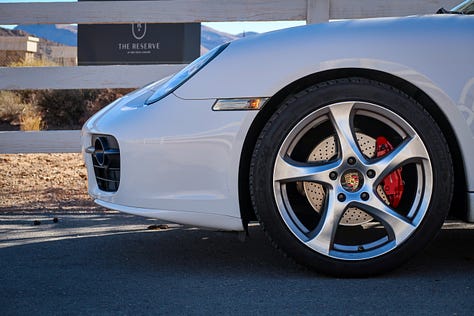
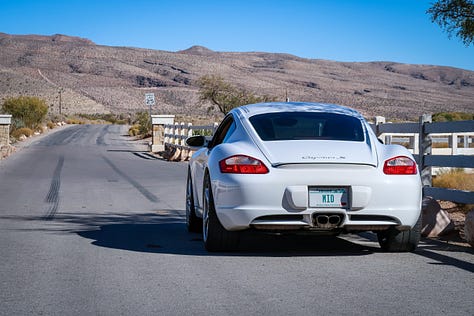
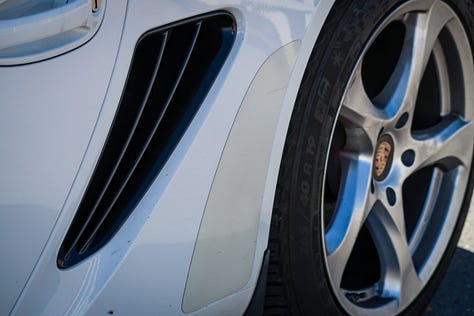

A Mid-Engined Daily Driver
Like most Porsches of the era, they proved to be generally reliable-ish aside from the usual suspects in Porscheville. The IMS bearing ought to be sorted out sooner rather than later, if the one you’re eyeing hasn’t had it done already. The M97s may also suffer from bore scoring, with S models often suffering more than base cars due to higher stresses, poorer tolerances, and reutilizing the same cooling systems as the 2.7.
“Why, yes, I wanted the engine that bore scores more,” Sanders declared, instilling much confidence before a half-day’s drive far away from any Porsche service center.
Starting with a jaunt through Vegas’ suburban grid highlighted the Cayman’s unexpected knack for mundanity. Plush seats, usable cupholders and storage cubbies, and generous storage from the trunk and frunk can genuinely make this someone’s only car if they hate playing DD for their friends. It enabled Sanders to cover thousands of miles over tens of hours without issue during his grand tour from Boise to Salt Lake City to Las Vegas and back.
Most impressive is how it manages such a composed ride, at least with this car’s refurbished non-PASM suspension, unfazed by tattered asphalt despite the short wheelbase and this example’s larger 996-esque wheels. The ride works in conjunction with commendable sound deadening and a rock-solid interior devoid of creaks after 77,000 miles to deliver a quiet ride for the discerning luxury buyer—or irresponsible 20-something-year-old circa 2025.
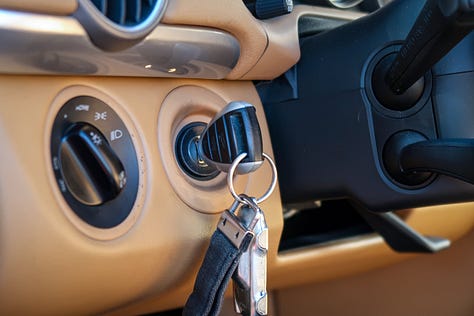
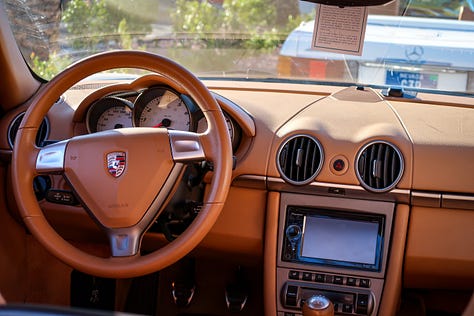

Still A Porsche At Its Core Many Years Later
Soon, the lil’ Porsche and I departed the valley and ascended into the lush mountains for some exercise on their asphalt ribbons. I leaned a little more on the throttle pedal, dove into corners with more fervor, and learned that a two-decade-old Porsche can still Porsche, which I frankly should’ve expected. It’s not like journos were singing its praises that hard. Were they?
“Perhaps due to its mid-engine layout and slightly rearward weight distribution, the Cayman S felt more stable and balanced during severe braking,” Car and Driver’s Tony Quiroga stated in a shootout with the BMW Z4 M. “Steering is similarly reassuring, direct, and communicative.”
“In the Cayman S, Porsche has conceived and delivered a superb driving instrument, MotorTrend’s Matt Stone praises in an in-period first drive review. “It combines precision, balance, gusto, style, and what we’re sure will be impressive test-track performance. It’s silly fun to drive; a hot-looking partner you’ll enjoy on your first date and never tire of.”
“It’s a blessedly small two-seater,” freelance writer Peter Nelson remarks in his recent review and Hagerty Car Profile of a stock Cayman S. “The current (not for long) 982-gen 718 Cayman is considered small by modern standards, but the 987 is smaller still, and truly feels like a toy to toss around. Yet it also feels confident enough to carve responsibly through a twisty mountain road, which can’t be said for a lot of modern enthusiast chassis.”
Oh. So they were. And they seem to have been onto something.
The hydraulic steering is plenty sharp but not darty and exhibits appreciable feedback through its appropriately-sized wheel, despite the Michelin Alpin winter rubber. I can only imagine the sensations with proper summer tires. Sanders insists it’s a world of difference, with the steering coming to life further. It also has a decent amount of heft, without feeling needlessly so or artificially weighted.
Brakes, small in appearance, are A1 in performance. Four-piston front calipers provide great bite, a firm pedal, and friendly modulation. “Friendly” also goes for chassis tuning that juggles luxury product and bona fide sports car impeccably, even with this car’s lack of the optional PASM adaptive suspension. What makes for a comfortable ride also lends to excellent body control and a resistance to bad asphalt. It simply shrugs off bumps and holds its line without much fear of jostling or punishment from understeer or oversteer.
Bore scoring, be damned. The M97 powertrain is a sweetheart, as well. The addictively slick manual gearbox, paired with a light clutch and its questionably long pedal travel, routes 295 horsepower from an engine that’s as wonderful as the internet’s many prophecies have foretold regarding Porsche flat-sixes. The potency, reigned in by traction afforded by its wide rear tires and mid-engined layout, enabled the big-wig mags to clock 0-to-60 in 4.8 seconds and quarter-mile times of 13.3 at 107 mph in its day. There’s plenty of midrange torque and a deliciously progressive powerband that never relents as you edge nearer to the 7,000-rpm limit.
In short, Porsche flat-sixes rule.
The Cayman S proved to be a driver’s delight, indeed. However, I’m unconvinced that its efforts are enough to scratch the itch in everyone. It’s very close. But not quite there. I can’t help but think it could’ve been a little lighter. A little faster. A little more reactive to inputs and communicative to the driver. Porsche thought so, too, hence the later R model or later generations’ GTS and GT4. Unfortunately, those occupy higher price brackets on the used market, leaving us with something that arguably compromises just a smidge too much, so it can be a palatable everyday sports car.
Is Being “Still A Porsche” Enough?
For instance, without any factory sports exhaust or aftermarket option, the amazing flat-six is too shy to properly sing its wonderful song. The tone is there, but the volume is way down. An apparent fix is a humorously named “GT4 RS mod,” which is simply removing the insulated engine cover and introducing a whirlwind of flat-six clatter and metallic induction honk, but also more annoyingly agricultural engine and drivetrain noises.
The powertrain also feels neutered by long gearing that leans towards bahnstorming and larger racetracks rather than backroads and more technical circuits. And, while a featherweight today at a tick over 3,120 pounds, it’s not as light as expected for something so small and mechanically simple. It’ll still easily outmaneuver most present-day performance cars, for sure. But today’s Miata and GR86/BRZ twins, close rivals in terms of value and driving ethos, may beg to differ.
To those searching for something with the ability to pull double duty as your canyon carver and 9-to-5 runner, the Cayman hits the nail on the head. Just know its limitations and prepare for modifications should you yearn for much more, of which there’s plenty to choose from. And I mean plenty. Tuners can, fortunately, still have their field day with one of these and build their own home-brewed GT4 fighter, should they please.
A Modern Classic That’s Worth Another Look
The 987.1 Cayman S greatly impresses and leaves me craving something extra at the same time, as though the R, GTS, or GT4 would’ve fully fulfilled a promise I thought had been made. Maybe the love surrounding these as values came down instilled expectations I shouldn’t have placed on a car whose mission statement was never to appeal to the mega-hardcore, such as me. Or maybe the Cayman complex is real, after all.
I’ve learned that these are not perfect one-to-one Lotus alternatives. It will never be your bargain-bin Ferrari F430 or Lamborghini Gallardo. But then, you shouldn’t treat them as such. To its target buyers then and its current buyers now, that’s a-okay.
The combination of everyday refinement and unflappable dynamics blends into a product that appeals to a broad spectrum of drivers. It’s a strong alternative to the Mustangs, C7 Corvettes, and GR86s that older Gen Z and younger Millennials have been snagging, one that’s definitely worth a hard look should a quarter-life crisis beckon for you to reinvigorate your garage with a little more flavor.



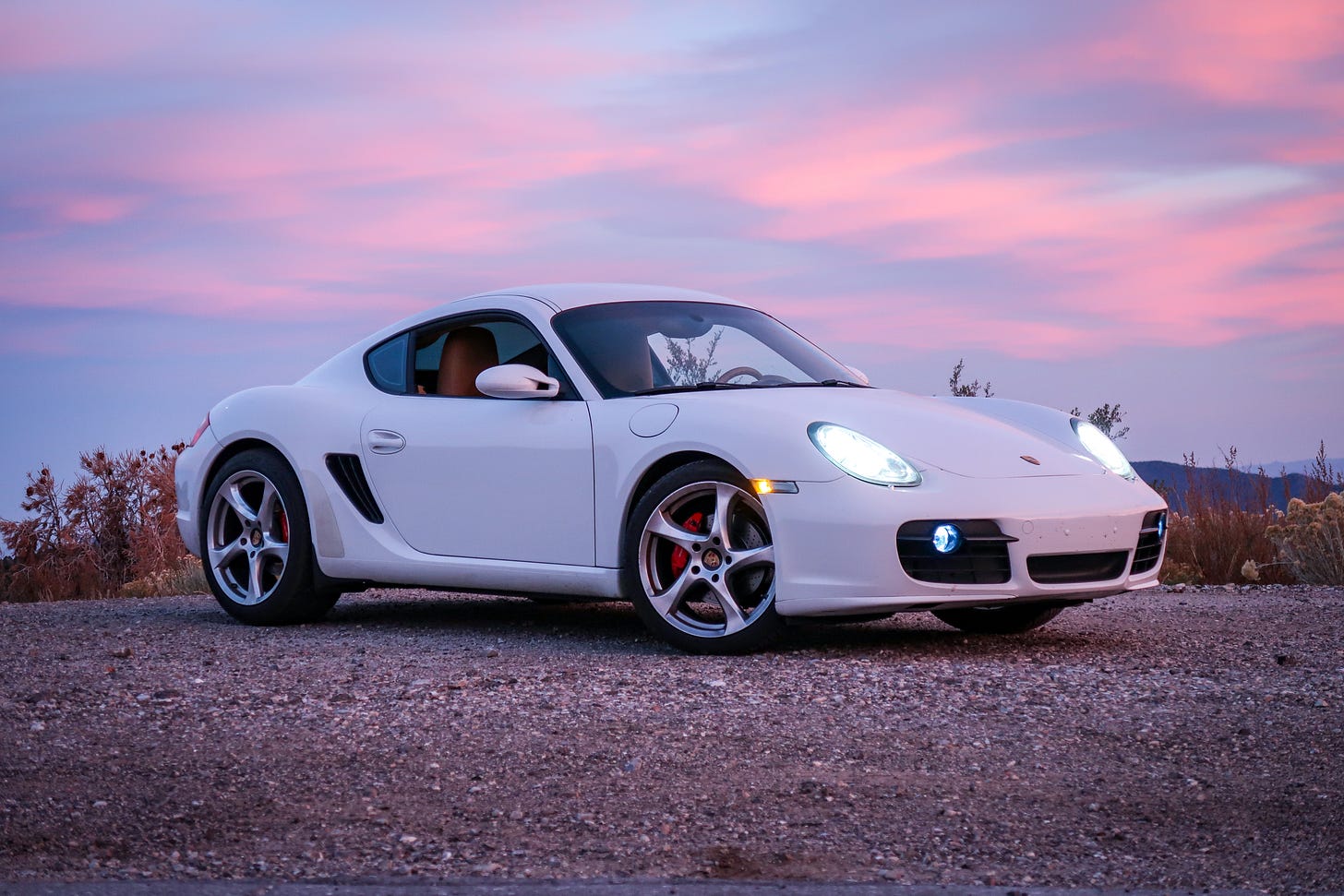
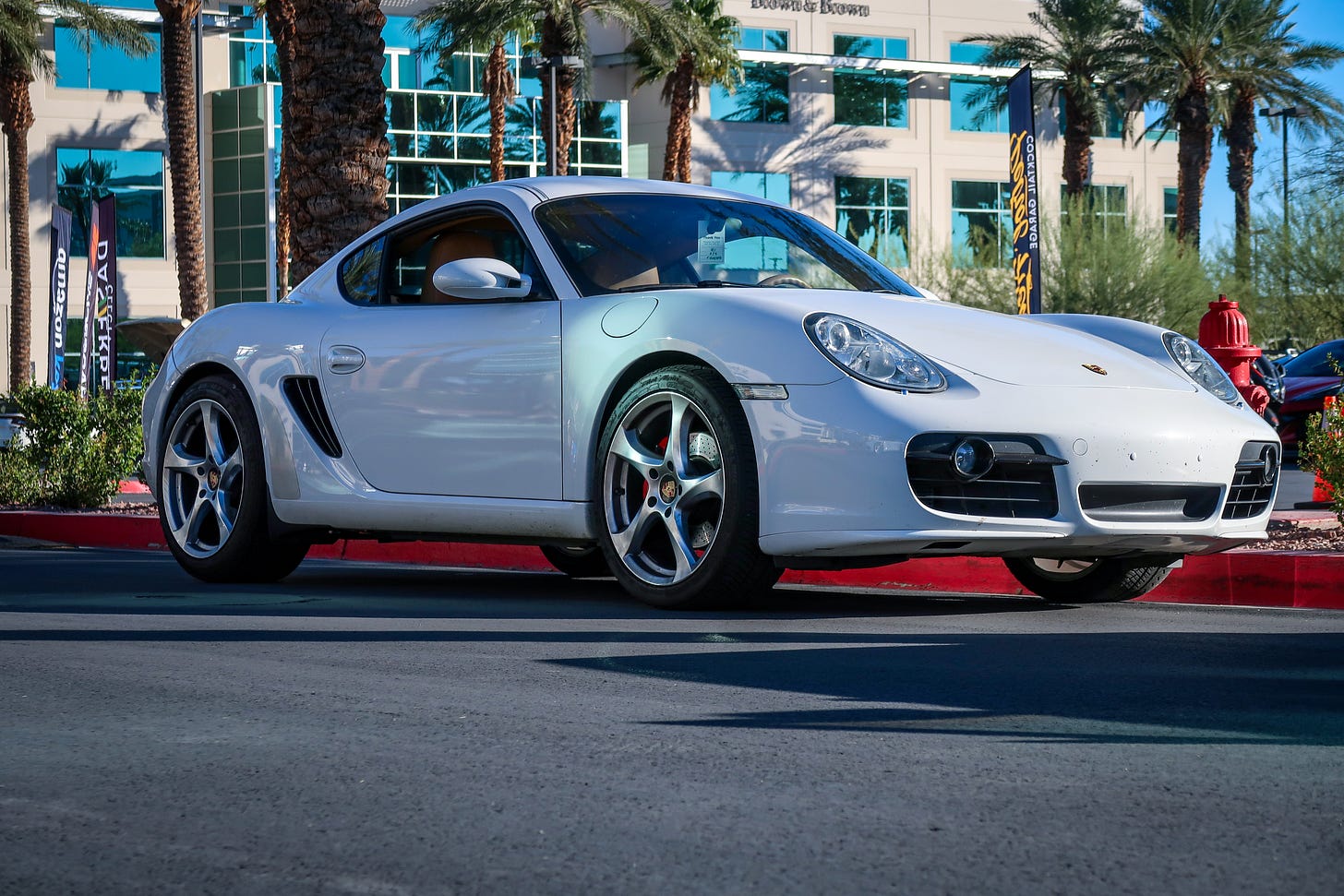
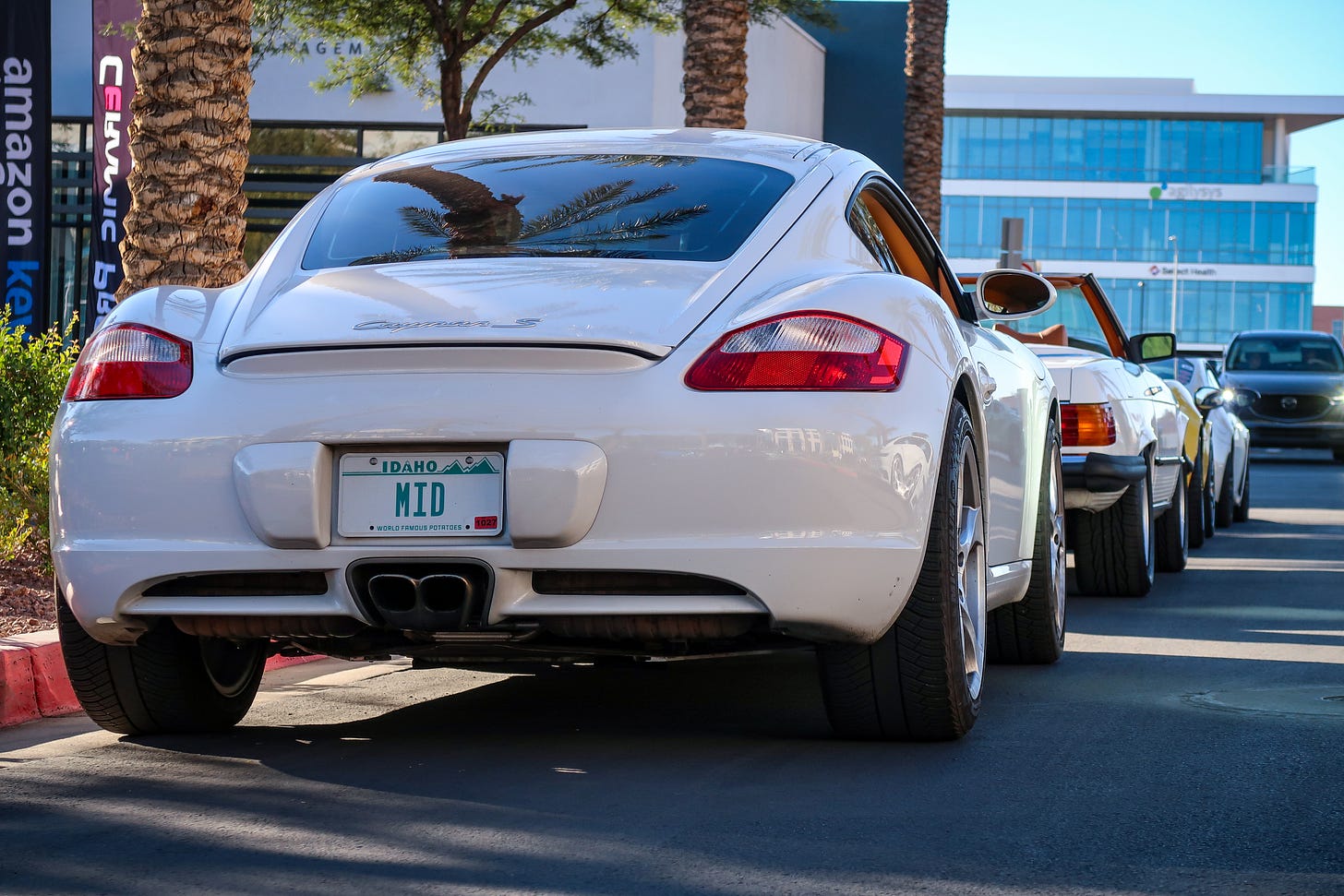
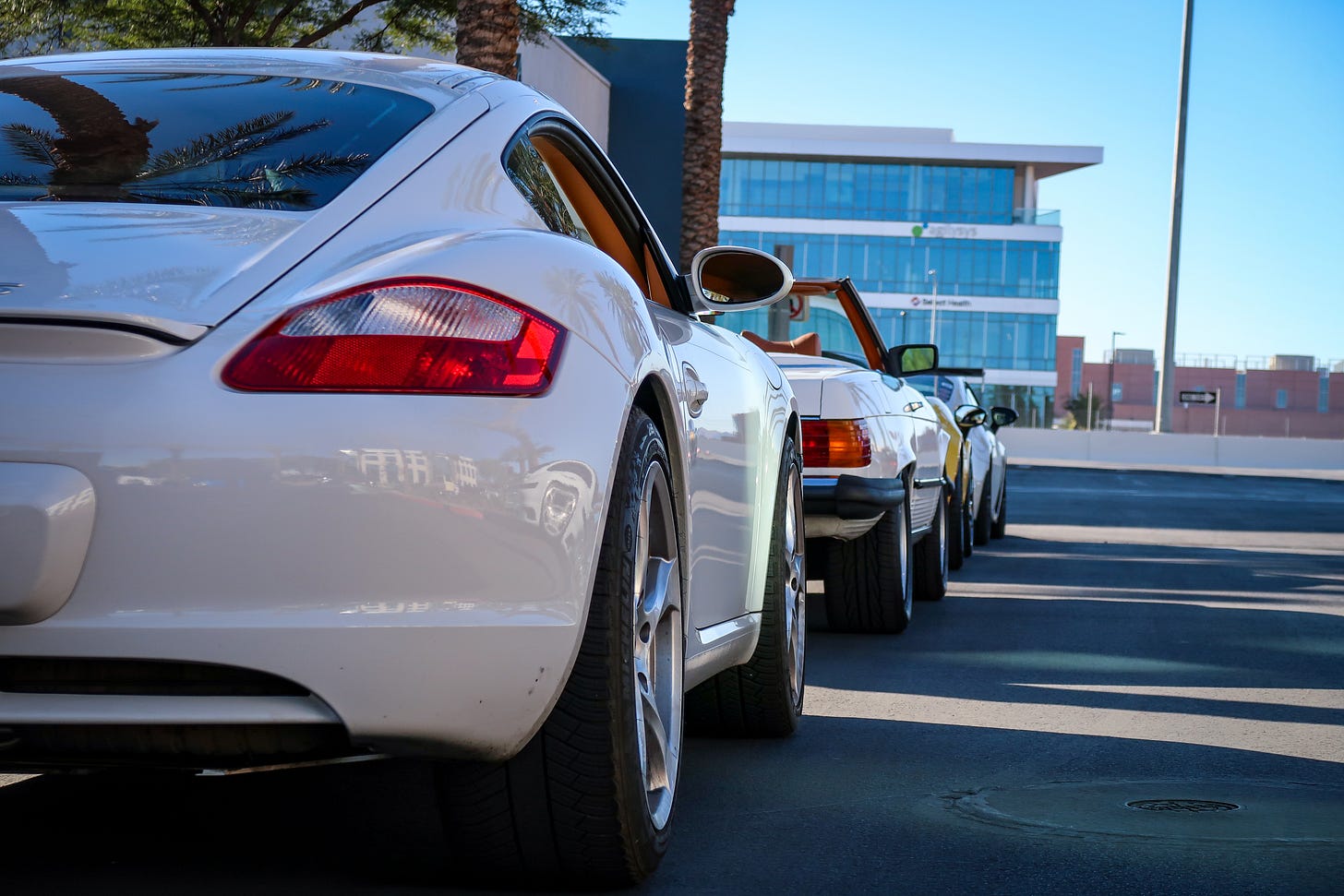
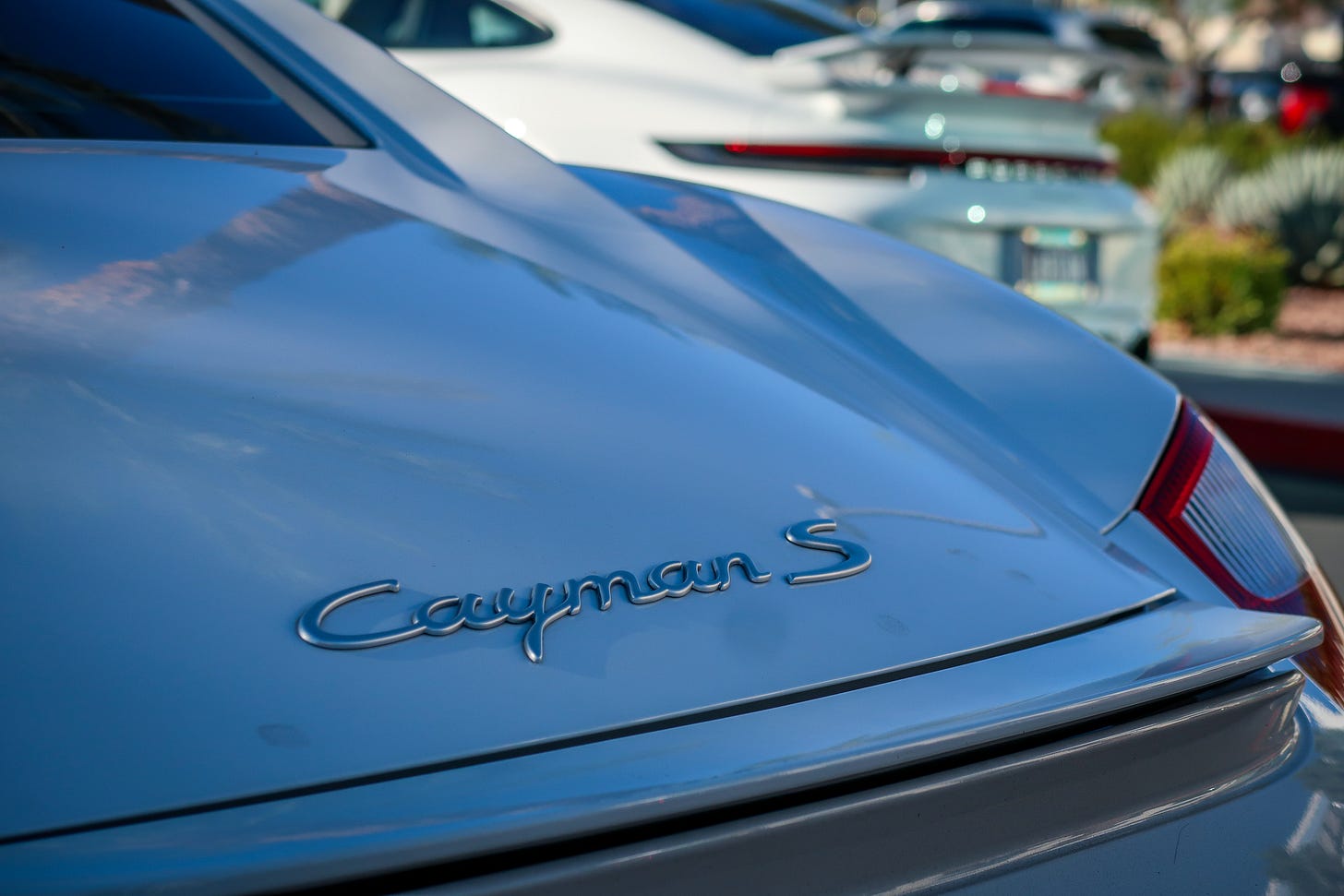

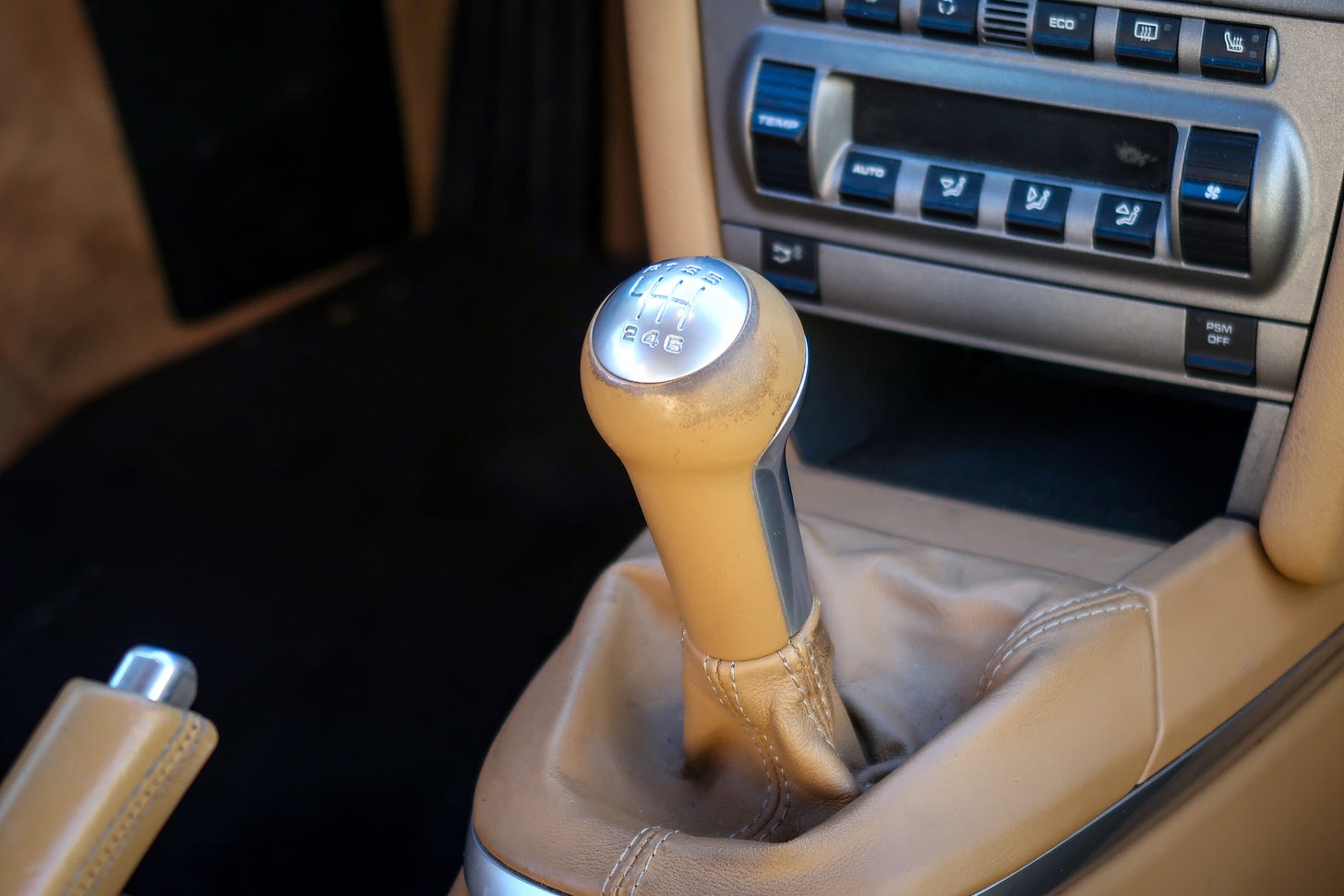
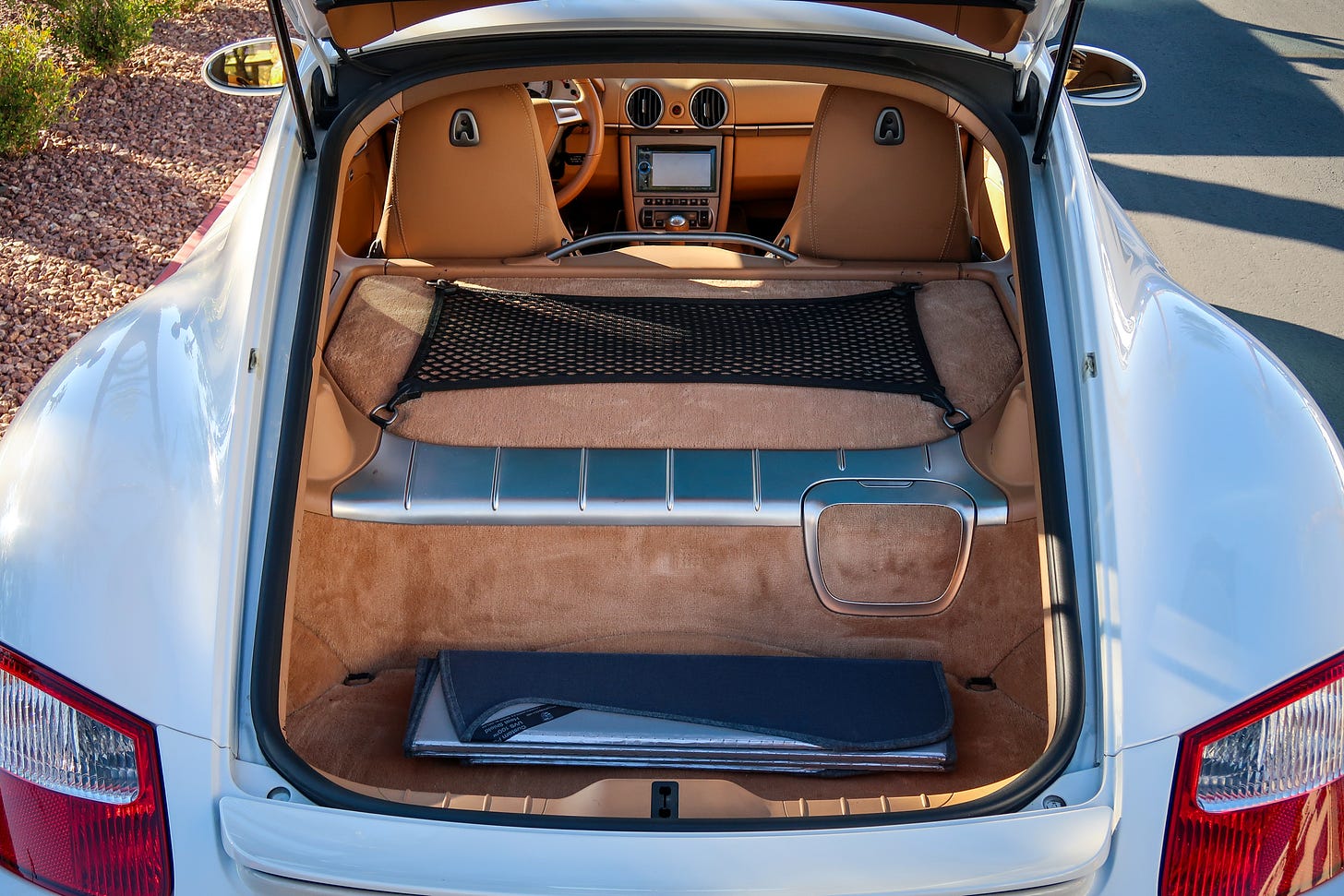
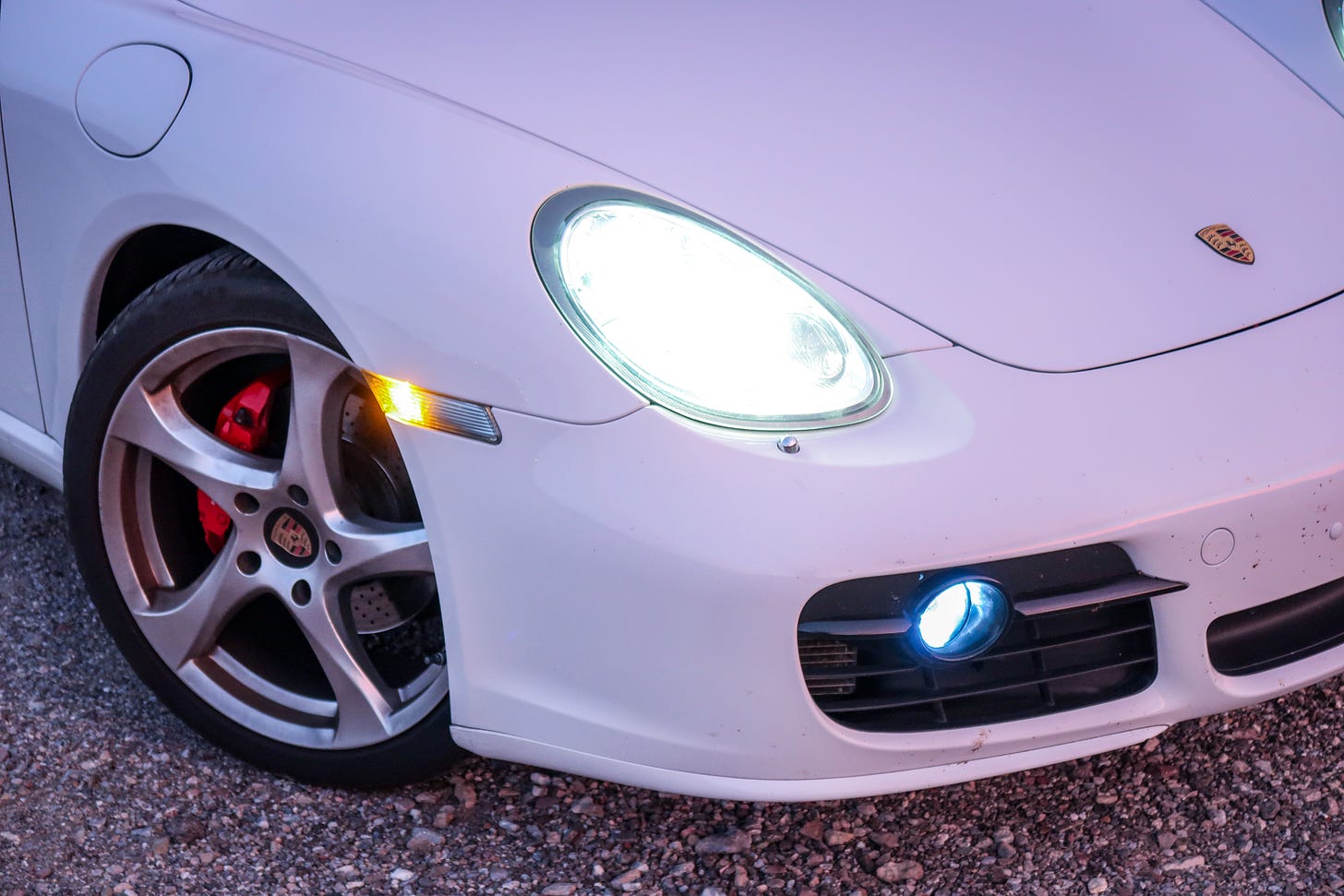
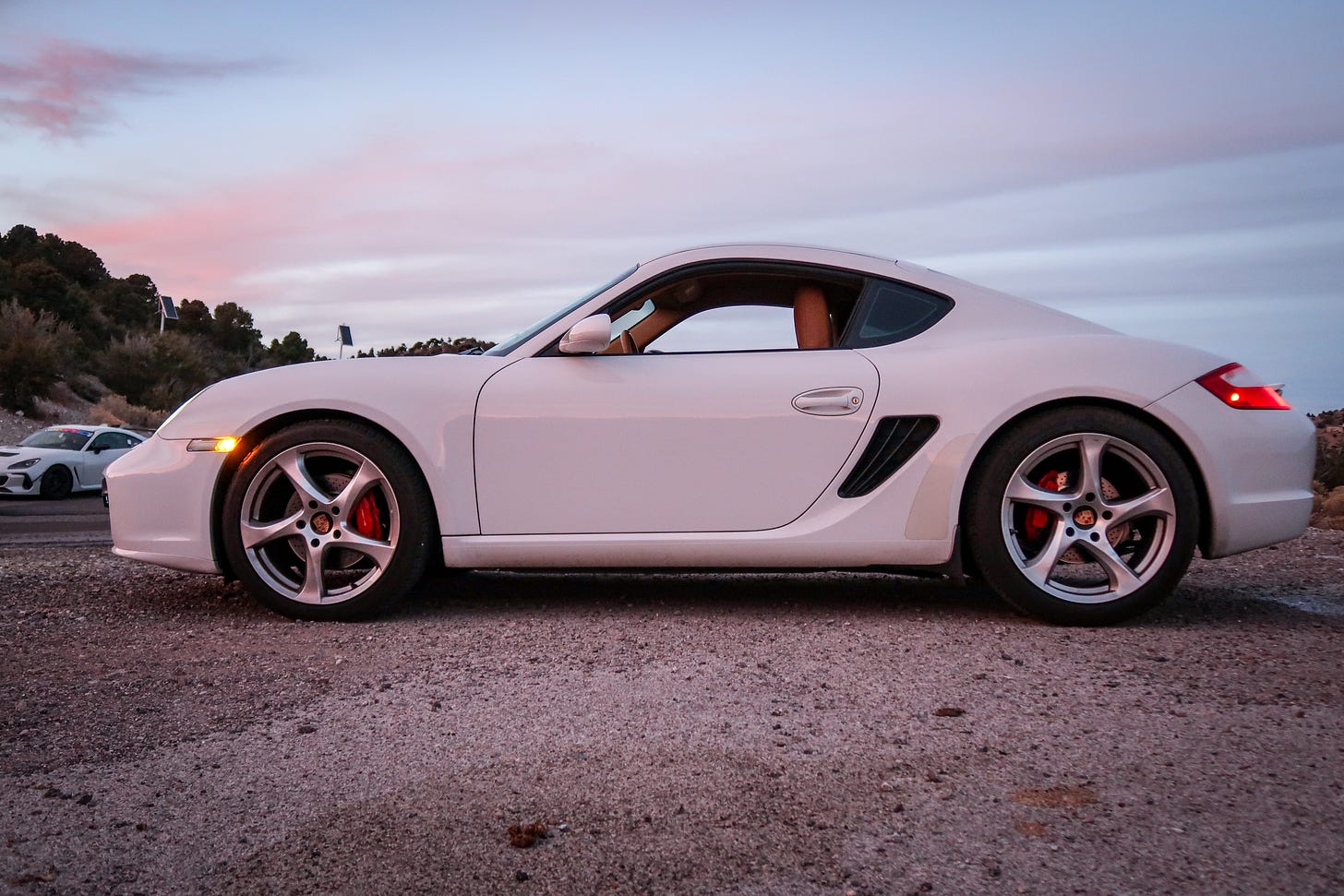
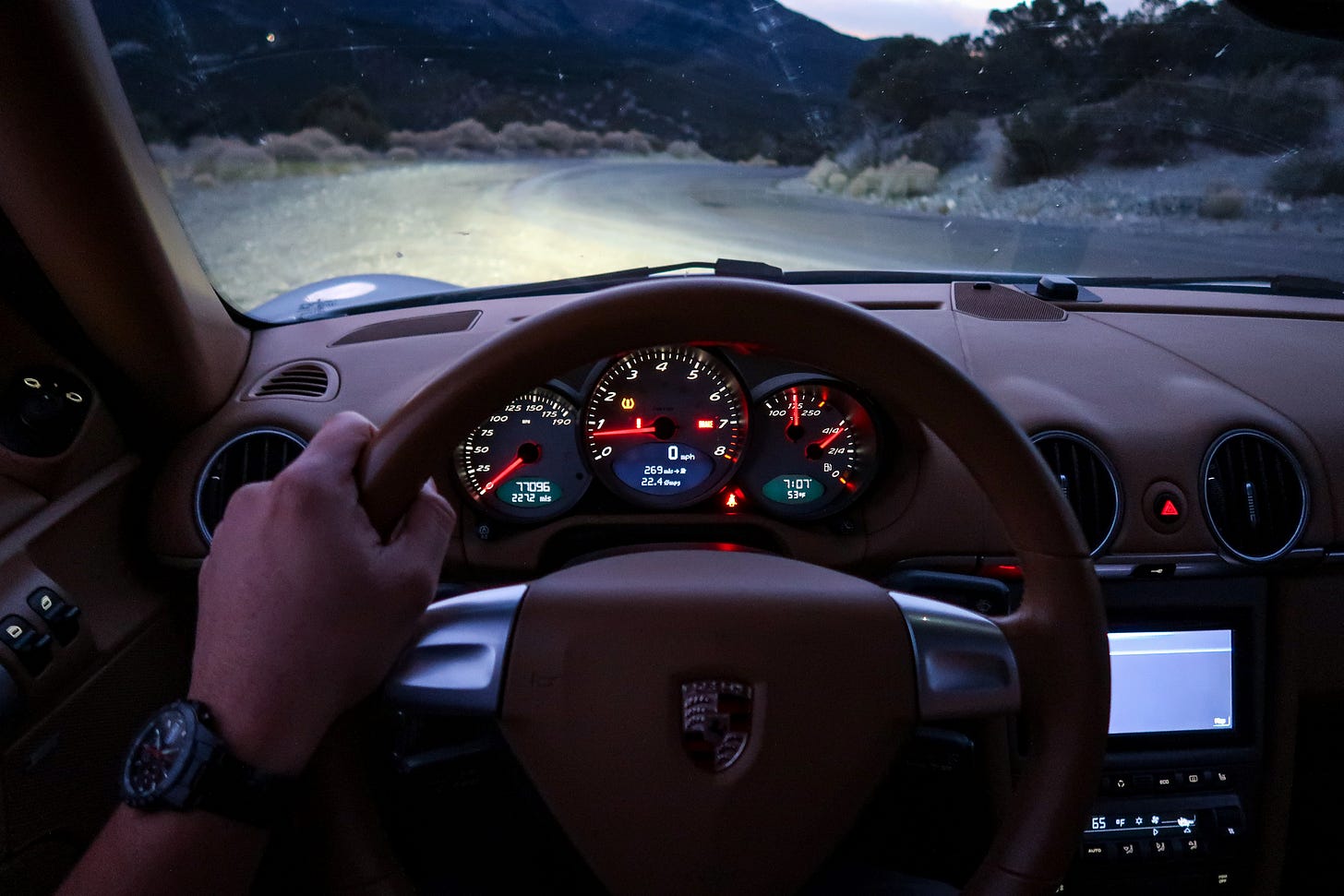
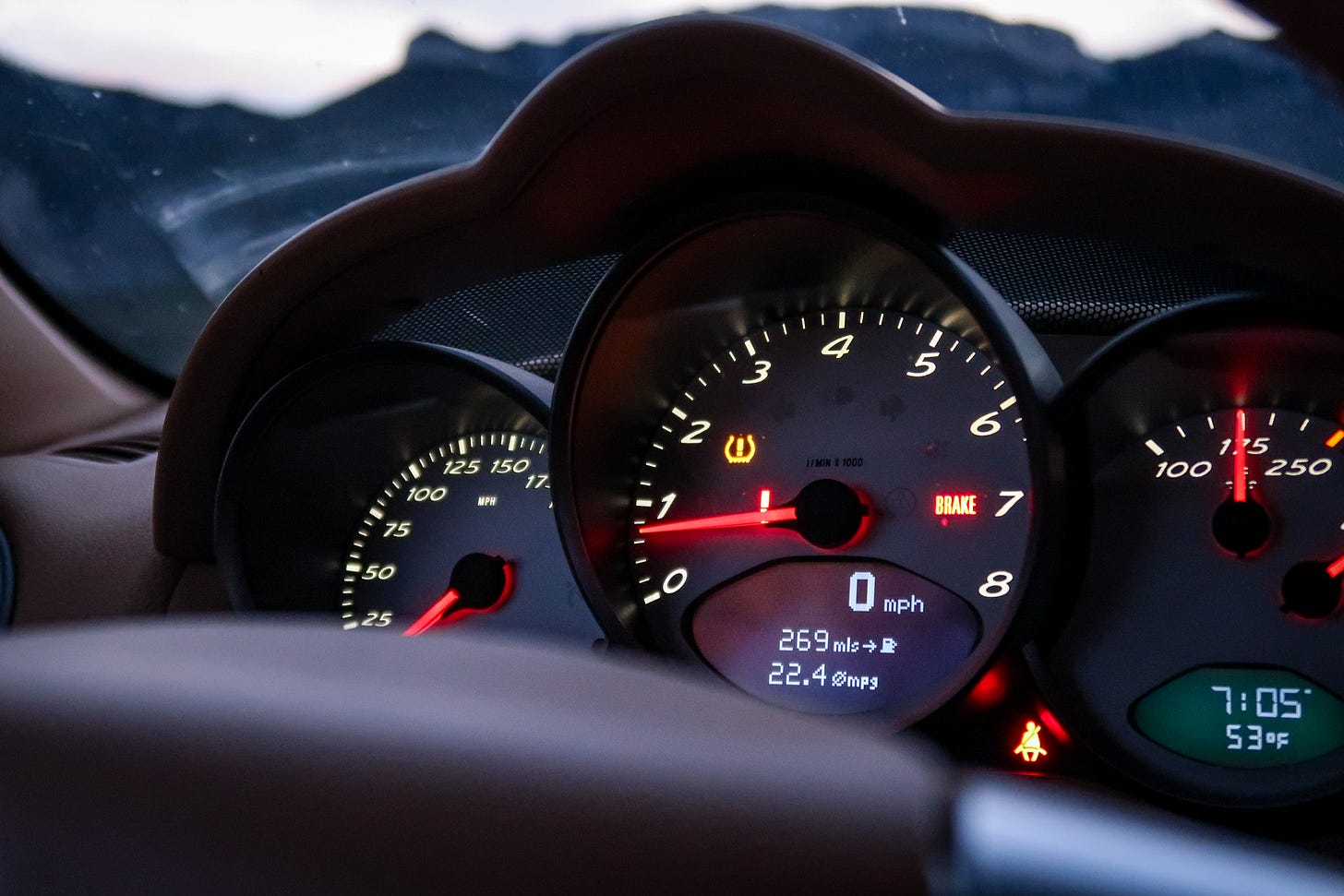
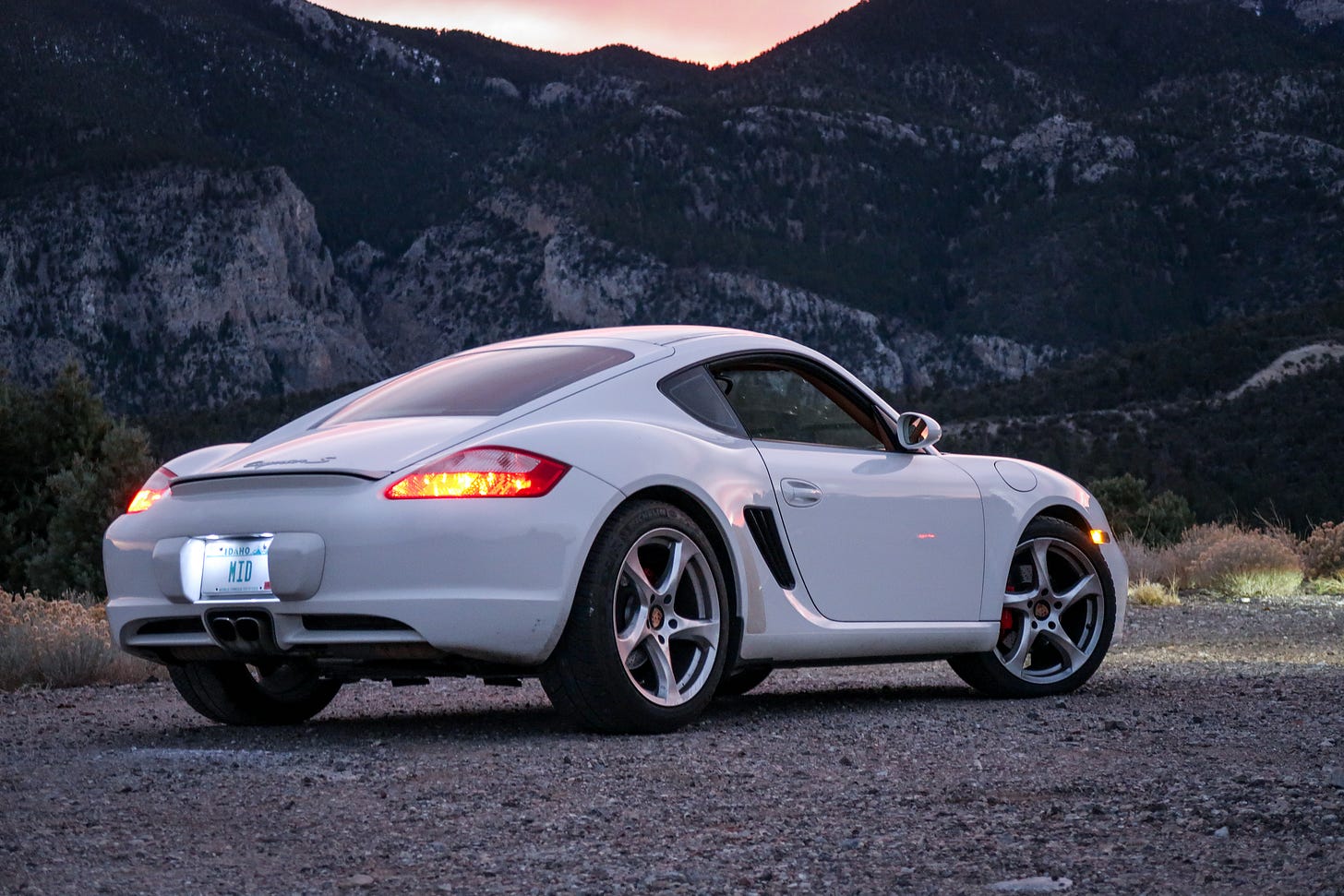
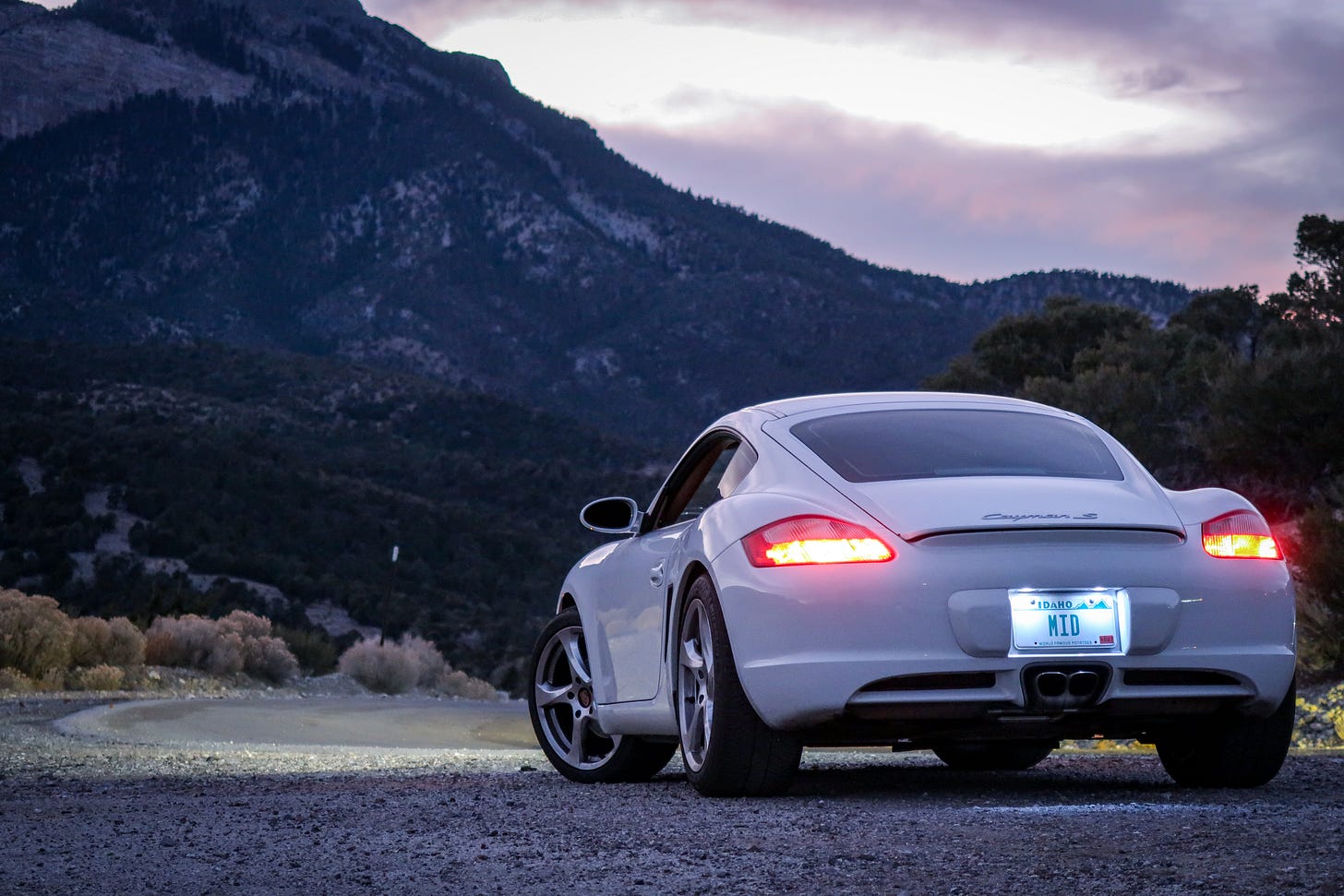


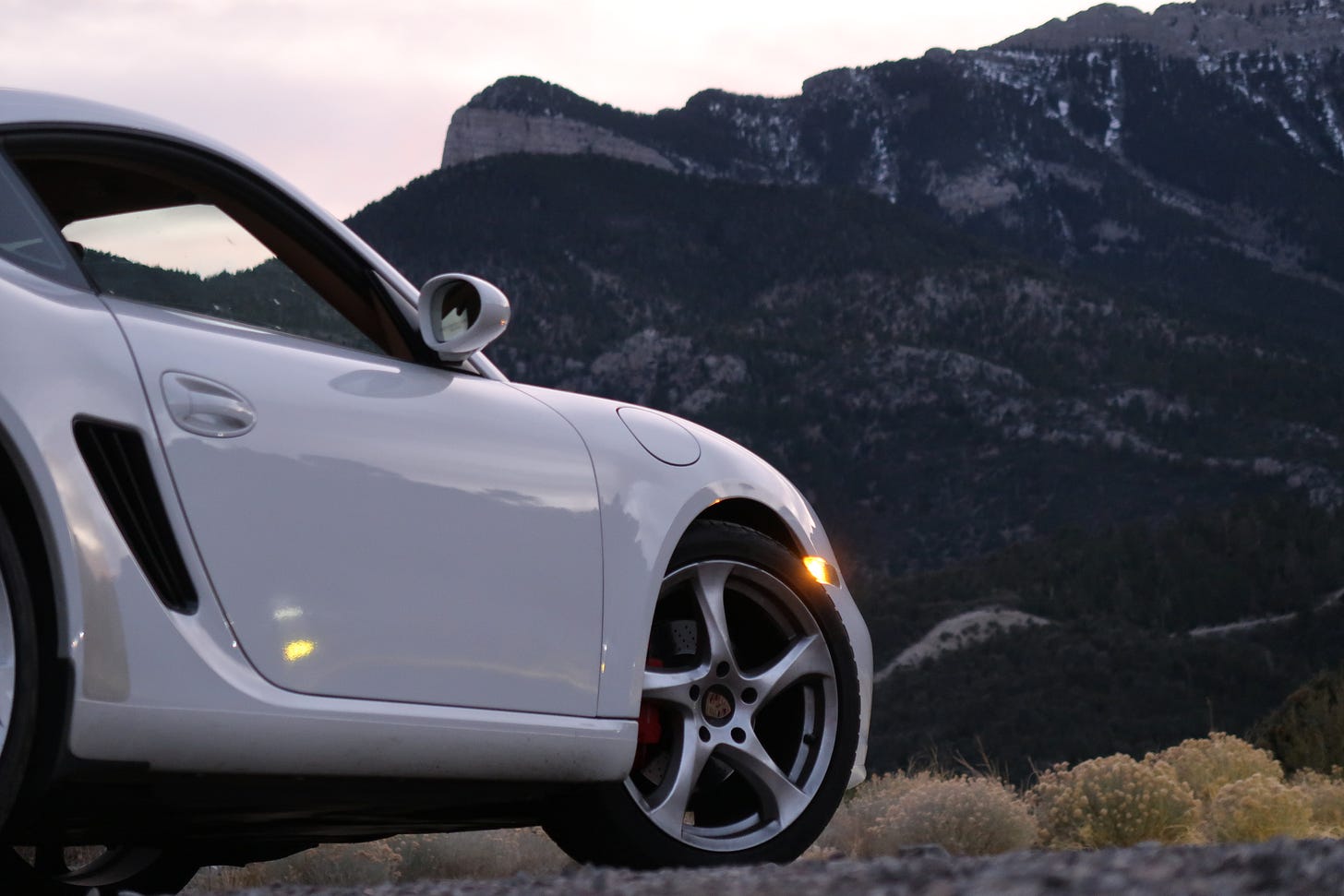
Looks very comfortable on the inside https://auto.ae/dubai/sale/car/porsche/porsche-cayman-iii-718-982-2017/id/214744/